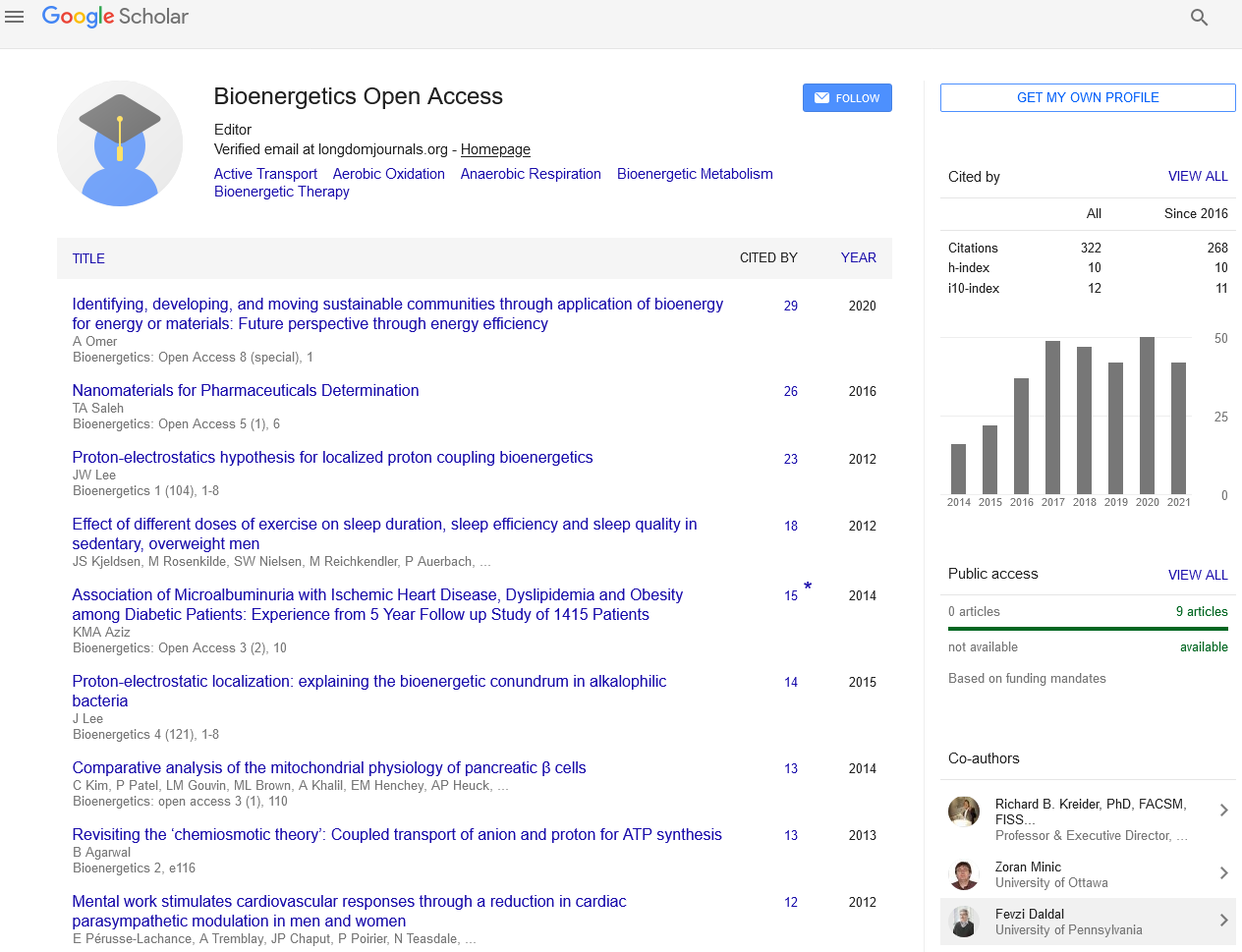Indexed In
- Open J Gate
- Genamics JournalSeek
- Academic Keys
- ResearchBible
- RefSeek
- Directory of Research Journal Indexing (DRJI)
- Hamdard University
- EBSCO A-Z
- OCLC- WorldCat
- Scholarsteer
- Publons
- Euro Pub
- Google Scholar
Useful Links
Share This Page
Journal Flyer

Open Access Journals
- Agri and Aquaculture
- Biochemistry
- Bioinformatics & Systems Biology
- Business & Management
- Chemistry
- Clinical Sciences
- Engineering
- Food & Nutrition
- General Science
- Genetics & Molecular Biology
- Immunology & Microbiology
- Medical Sciences
- Neuroscience & Psychology
- Nursing & Health Care
- Pharmaceutical Sciences
Lipid droplets in human atherosclerosis: Anatomy and pathophysiological relevance of multifunctional organelles
3rd International Conference on Lipid Science and Technology
December 11-12, 2017 | Rome, Italy
Ida Perrotta
University of Calabria, Italy
Scientific Tracks Abstracts: Bioenergetics
Abstract:
Introduction: Lipid droplets (LDs) are lipid-rich organelles found nearly ubiquitously in cells where they perform diverse functions such as lipid storage for energy production and membrane synthesis, intracellular trafficking, and viral replication. Long perceived as a simple reservoir of neutral lipids, LDs have recently attracted great interest in biomedical research being recognized as dynamic structures with a complex and interesting biology. In many non-adipocyte cells, LDs have been shown to be highly motile and have been often found to interact with the endoplasmic reticulum (ER), mitochondria, endosomes, and peroxisomes. To date, however, much remains unknown regarding the topographical connections between LDs and other cell organelles in the cardiovascular system, especially in atherosclerosis. In order to fill this gap, an electron microscopic analysis has been conducted on human atherosclerotic plaques and the results are presented herein. Materials & Methods: Specimens of atherosclerotic human aorta were obtained from patients undergoing surgical repair of the aortic atherosclerotic aneurysm. Tissues were fixed in glutaraldehyde, post-fixed with osmium tetroxide, dehydrated through a graded acetone series, and embedded in araldite. Ultra-thin sections were examined with a JEOL JEM-1400 PLUS transmission electron microscope operating at 80 kV. Findings: LDs have been found to be closely associated with the convoluted rough-surfaced ER membranes and even with the lumen of these structures probably to facilitate a non-vesicular lipid transport between the ER and the droplets. TEM examination also revealed the presence of membrane-like structures in the LD core. Conclusion & Significance: The selective physical interaction between LDs and ER membranes in the foam cells of human atherosclerotic plaques may function as a lipid-buffer system that allows the sequestration of free fatty acid, therefore, reducing the risk of lipotoxicity. The ultrastructural anatomy of these organelles might also account for some of their specific functional properties such as the synthesis of inflammatory lipid mediators by specific membrane-spanning enzymes which might reside in their internal membranous structures. Recent Publications: 1. Perrotta I (2017) Interaction between lipid droplets and endoplasmic reticulum in human atherosclerotic plaques. Ultrastructural Pathology 41(1):1-9 2. Perrotta I (2017) The origin of the autophagosomal membrane in human atherosclerotic plaque: a preliminary ultrastructural study. Ultrastructural Pathology 41(5):327-334. 3. Perrotta I and Perri E (2017) Ultrastructural, Elemental and mineralogical analysis of vascular calcification in atherosclerosis. Microscopy and Microanalysis 23(5):1030-1039 4. Perrotta I and Aquila S (2016) Exosomes in human atherosclerosis: an ultrastructural analysis study. Ultrastructural Pathology 40(2):101-106. 5. Perrotta I, Aquila S and Mazzulla S (2014) Expression profile and subcellular localization of GAPDH in the smooth muscle cells of human atherosclerotic plaque: an immunohistochemical and ultrastructural study with biological therapeutic perspectives. Microscopy and Microanalysis 20(4):1145-1157.
Biography :
Ida Perrotta obtained her degree in Biological Sciences and a Doctorate in Animal Biology from the University of Calabria. Currently, she is Chief Technician of Transmission Electron Microscopy Unit at the Centre for Microscopy and Microanalysis (CM2), University of Calabria. She has published more than 60 scientific papers and is actively involved in research as well as in a number of international projects in the atherosclerosis field.

